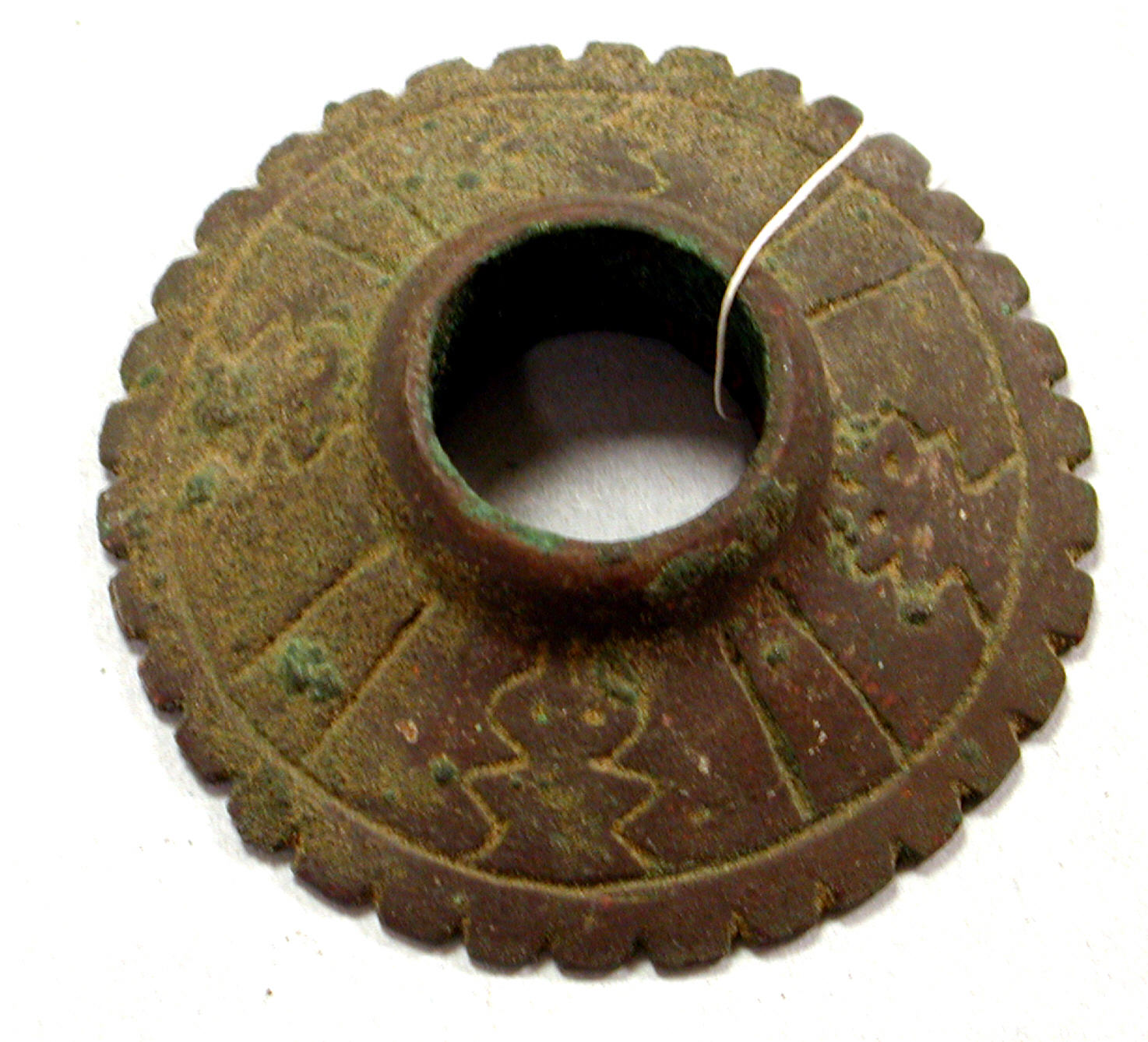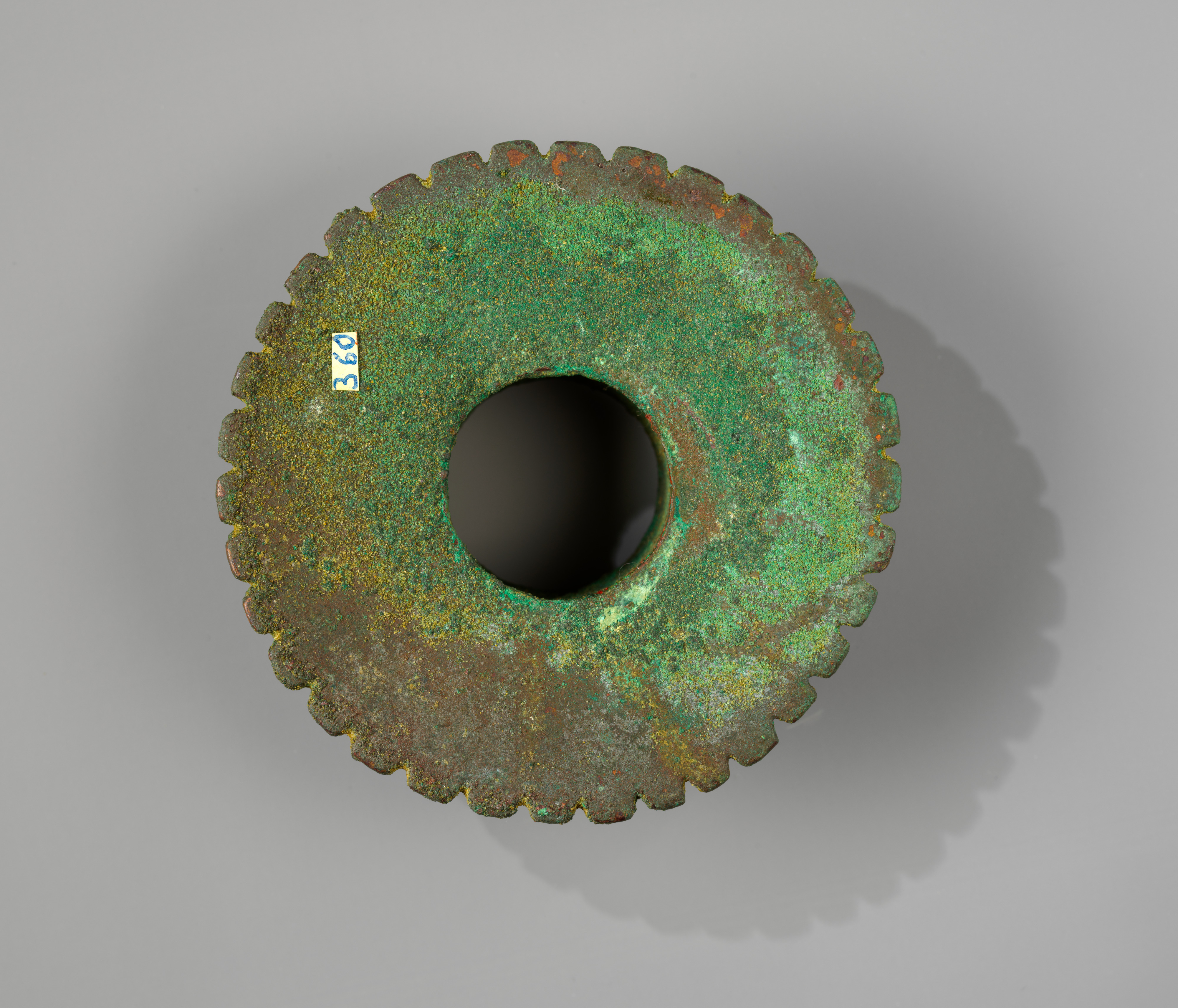Mace head
Not on view
The preferred weapons of battle and hunting in ancient Peru were the mace and the spear. A mace head would have been affixed to the end of a wooden club, and it was deployed primarily for hand-to-hand combat. A mace head’s surface allowed for embellishment, and artists experimented with a variety of forms and decoration in both stone and metal (for other examples see MMA 1994.35.627; 1987.394.151; 1987.394.166).
This cast copper mace head was made by a metalsmith of from the Vicús culture of Peru’s far north coast. Vicús mace head designs range from simple geometrical shapes to animal heads (Carcedo, 1999: 428-4431; 438-439). This weapon has a surface divided by incisions into four sections with an abstract bird or fish-like design, as well as a dentillated edge and an undecorated bottom. The narrow edge of this shape produced considerably more pressure than round or bulbous forms when struck against a victim. Some mace heads were gilded after casting and may have been made only for rituals or for internment as the gilding probably would not have withstood the rigors of battle.
References and Further Reading
Carcedo, P. Cobre del antiguo Perú-The copper of ancient Peru. AFP Integra: Lima, 1999.
Kaulicke, Peter. “The Vicús-Mochica Relationship.” In Andean Archaeology III, edited by William H. Isbell and Helene H. Silverman, pp. 85-111. Boston: Springer, 2006.
Makowski, K., C. Donnan, I. Amaro, L. J. Castillo, M. Diez Canseco, O. Eléspuru, and J. Murro. Vicús, colección arte y tesoros del Perú. Lima: Banco de Crédito del Perú, 1994.
Vetter, Luisa. “El gran hallazgo de 1956 en Piura: Nuevas preguntas sobre la metalurgia de los Andes centrales.” In Los desafíos del tiempo, el espacio y la memoria. Ensayos en homenaje a Peter Kaulicke, edited by Rafael Vega Centeno and Jalh Dulanto, pp. 505–41. Lima: Pontificia Universidad Católica del Perú, 2020.
Vetter, Luisa et al. “La técnica del cobre dorado en objetos de metal usados entre el 400 AC y el 450/500 DC en la Bahía de Huanchaco, costa norte del Perú.” Chungará 55 número 4 (2023), pp. 681-701.
This image cannot be enlarged, viewed at full screen, or downloaded.
This artwork is meant to be viewed from right to left. Scroll left to view more.




